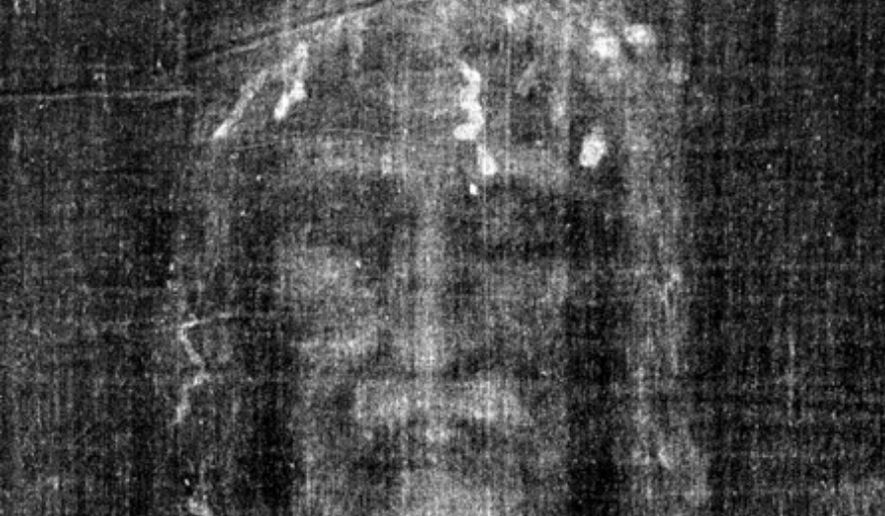The Museum of the Bible will open a major exhibit on the Shroud of Turin on Saturday, but its top curator says the genuineness of the alleged burial cloth of Jesus isn’t the point.
“Whether or not the shroud is authentic, it’s certainly part of the impact of the Bible and reflects back on the stories of the Bible,” said Jeffrey Kloha, the museum’s chief curatorial officer.
The shroud, he said, “gave us a way to enter into that conversation of why are these objects so important, or this particular object? How do these [objects] help people reflect on and understand, internalize the stories in the Gospels? It’s a way to get to both the stories of the Bible and the impact of the Bible at the same time.”
The exhibit, titled “Mystery and Faith: The Shroud of Turin,” will feature a “three-dimensional reconstruction” of the shroud, but not the original that is kept in Turin. It is designed to explain the relic’s fascination for millions through the ages, Mr. Kloha said.
Visitors can touch the model and see where and how a burial shroud might cover a body, he said. The curator added that the replica will have “23 sensory spots on it” that, when touched, will play audio describing what that part of the garment shows, whether an imprint of a crown of thorns or a burn mark.
Another replica of the shroud will hang on an adjacent wall, showing what visitors to the original in Turin have seen on the occasions when it was put on display.
Mr. Kloha said the exhibit will look at scientific studies of the shroud, including photographs dating back to 1898, as well as an explanation of radiocarbon dating, which has been used in an attempt to determine the fabric’s age. In 1988, tests on portions of a fabric swatch taken from a corner of the shroud concluded that the material dated to the 13th or 14th centuries.
It will also provide insights into what the shroud is and “why it became such an object of interest,” Mr. Kloha said. The display will also provide insights into religious pilgrimages, “which is really what created the shroud as a superstar,” he added.
Controversy has enveloped the Shroud of Turin for centuries. Discovered in the 14th century in France, the cloth made its way to Italy and ultimately to the cathedral in Turin. The House of Savoy, an Italian royal dynasty, donated the shroud in 1983 to the Vatican, which now owns the cloth.
The 14-foot-by-4-foot shroud is said to contain the image of a bearded man whose body had been pierced numerous times, as in a crucifixion, and whose head bears marks consistent with a crown of thorns.
The Gospels of Matthew, Mark and Luke note a single piece of burial fabric, while the Gospel of John says “strips of linen” were used to wrap the body and a “headscarf” covered Jesus’ face.
Officially, the Vatican neither endorses nor disavows the shroud as Christ’s burial cloth.
However, Pope St. John Paul II and his successor, Pope Emeritus Benedict XVI, spoke favorably about the fabric, with John Paul calling it “the mirror of the Gospel.” Pope Francis, in 2013, said the shroud is an “icon of a man scourged and crucified.”
• Mark A. Kellner can be reached at mkellner@washingtontimes.com.




Please read our comment policy before commenting.